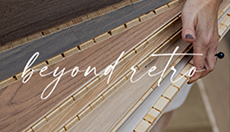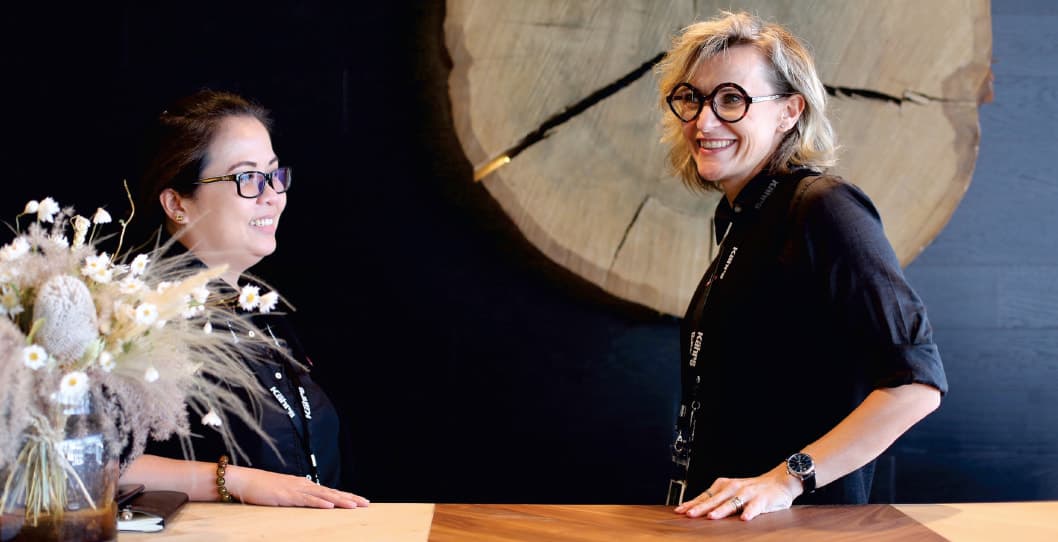Herringbone Pattern Types: Elegance and Versatility in Interior Design
May 2, 2025
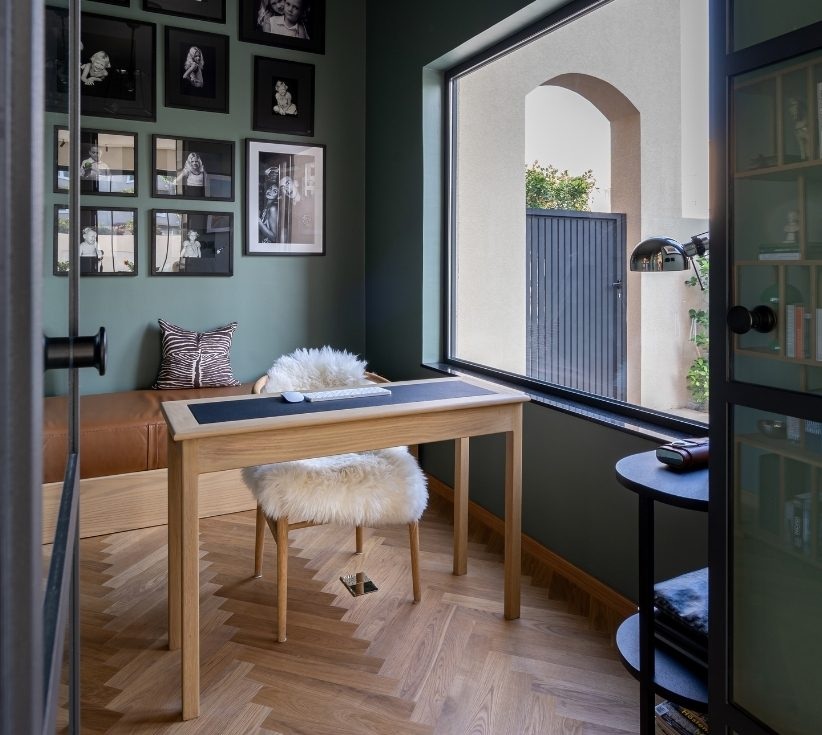
Maeen Villa in The Lakes, Dubai, with a cosy design, showcasing the Herringbone pattern flooring, by Nordic Homeworx
Herringbone pattern types add beauty and charm to any floor, making spaces look stylish and luxurious. Parquet wood flooring<span “> patterns like chevron and herringbone are popular choices in hardwood designs in the early years, and they’re making a big comeback in the 20th century. Used in homes and commercial spaces, these geometric patterns create a striking look and a sense of elegance. Their history spans architecture, textiles, and art, giving floors a unique story.
Let’s explore herringbone pattern types, their styles, and how they enhance your home or office.
The History of Herringbone Patterns
Herringbone pattern types get their name from the herring fish, as their V-shaped design looks like the fish’s skeleton. This pattern began in the Ancient Roman Empire, where road builders found that laying bricks in a V-shape on gravel made roads stronger and more stable.
By the Middle Ages, herringbone patterns appeared in European homes, decorating grand halls with intricate wood floors. Its simple yet elegant look made it a favorite for centuries, from castles to modern lofts.
Today, herringbone pattern types shine in all kinds of spaces; they blend old-world charm with new design trends, fitting both classic and modern interiors. Whether in cosy homes or busy offices, herringbone’s versatility keeps it popular. Its ability to work with different woods, tiles, or vinyl makes it a top pick for creating beautiful, lasting floors that tell a story of craftsmanship.
10 Herringbone Pattern Types
Herringbone pattern types come in many styles, using different block sizes and layouts to suit any room. Below is a table summarising 10 popular designs, followed by detailed descriptions:
| Pattern Type | Description |
| Traditional Herringbone | Classic V-shaped zig-zag using side-to-end blocks, ideal for timeless elegance |
| Herringbone with Square Insert | Adds square blocks between V-shapes for a bold, geometric twist |
| Skinny Extra-Long Herringbone | Long, narrow blocks create a dramatic zig-zag, perfect for large rooms |
| Double Herringbone | Pairs two blocks for a thicker V-shape, adding depth and visual interest |
| Block Basket Weave | 4×4 block squares alternate directions, mimicking a woven effect |
| 5-Block Basket Weave | Adds an extra block to basket weave, enhancing complexity for grand spaces |
| Straight Lay | Side-by-side blocks form a brick-like pattern, simple yet striking |
| Ladder Herringbone | Vertical blocks with horizontal “rungs,” versatile for varied block lengths |
| Chequerboard | Square blocks create a chessboard effect, bold with contrasting colours |
| Plank and Herringbone Mix | Alternates herringbone blocks with planks for a linear, modern look |
-
Traditional Herringbone
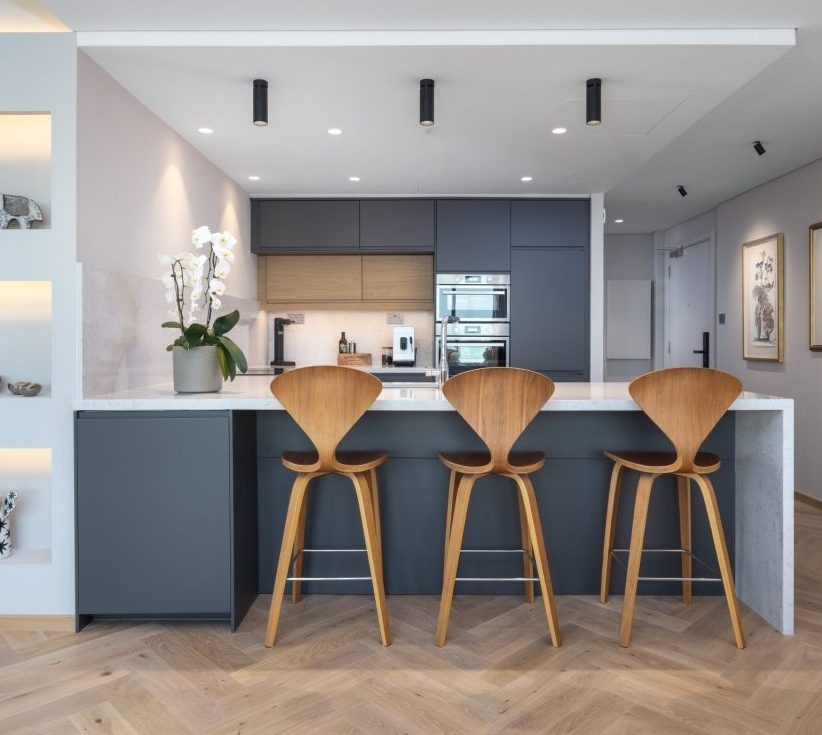
A traditional herringbone pattern inside this Scandinavian-inspired apartment in Fairways North Apartment, by Nordic Homeworx
Wood blocks placed side-to-side create a neat zig-zag pattern, bringing a classic, timeless charm to cosy living rooms, quiet hallways, or small entryways.
-
Herringbone with Square Insert
Square blocks fit between V-shapes, adding a fresh, bold style that stands out in modern offices, trendy dining rooms, or stylish lounges. This pattern feels fun and geometric, perfect for spaces needing a contemporary touch.
-
Double Herringbone
Two blocks for each V-shape form a thicker, fuller pattern, ideal for fancy homes, luxury boutiques, or upscale shop floors. This rich, bold look adds a touch of grandeur to special spaces.
-
Block Basket Weave
Groups of 4×4 block squares switch directions to look like woven fabric, creating a warm, cosy vibe for small bedrooms, quaint cafes, or snug reading nooks. It feels soft and welcoming, like a handmade blanket.
-
5-Block Basket Weave with Square Insert
Extra blocks and squares add more detail to the basket weave, perfect for grand foyers, art galleries, or elegant event spaces. This intricate pattern makes large areas feel special and artistic.
-
Skinny Extra-Long Herringbone
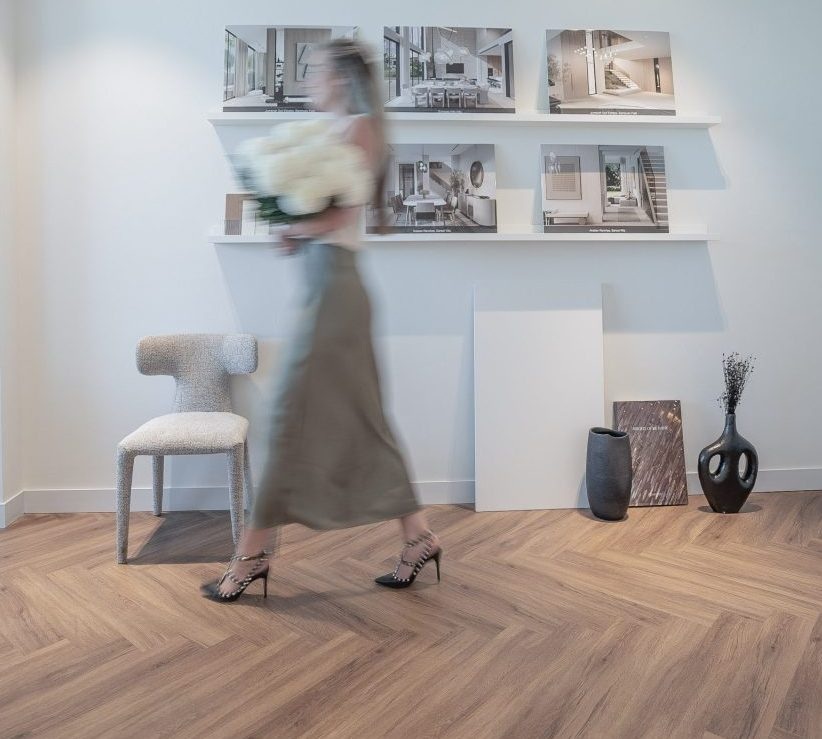
Interior of Elementa Design Studio showcasing a skinny extra-long herringbone pattern flooring, by Nordic Homeworx
Long, slim blocks make a big, eye-catching zig-zag, great for wide-open lofts, large commercial areas, or spacious showrooms.
-
Straight Lay
Blocks sit side-by-side like bricks, giving a clean, modern look for tiny apartments, creative studios, or minimalist home offices. It’s sleek and straightforward, keeping small spaces open and uncluttered.
-
Ladder Herringbone
Vertical blocks with horizontal “rungs” use different block lengths, ideal for unique layouts in open-plan homes, airy kitchens, or flexible living spaces; this pattern adds a playful, custom feel to creative designs.
-
Chequerboard
Square blocks form a chessboard look, bold and artsy for living areas, dining spaces, or creative studios with light and dark wood tones.
-
Plank and Herringbone Mix
Herringbone blocks mix with straight planks, creating a smooth, modern line for narrow hallways, sleek offices, or compact retail spaces. This design keeps things simple but stylish, perfect for tight areas.
Benefits of Herringbone Patterns
Herringbone pattern types bring unique advantages to interiors, combining beauty with practicality. Here are the key benefits, each with a brief description:
-
Visual Appeal
Herringbone pattern types draw the eye with their V-shaped designs, adding elegance and charm to any room, from homes to offices.
-
Versatility
They work with many flooring options, like wood or LVT flooring, fitting classic or modern styles in various spaces.
-
Durability
Built to last, herringbone pattern types handle heavy foot traffic, making them ideal for use in commercial spaces.
-
Increased Property Value
Their premium look boosts a property’s appeal, attracting buyers looking for stylish, high-quality flooring.
-
Customisable Designs
With varied block sizes and inserts, herringbone pattern types allow tailored looks for unique interior visions.
Choosing the Right Herringbone Pattern
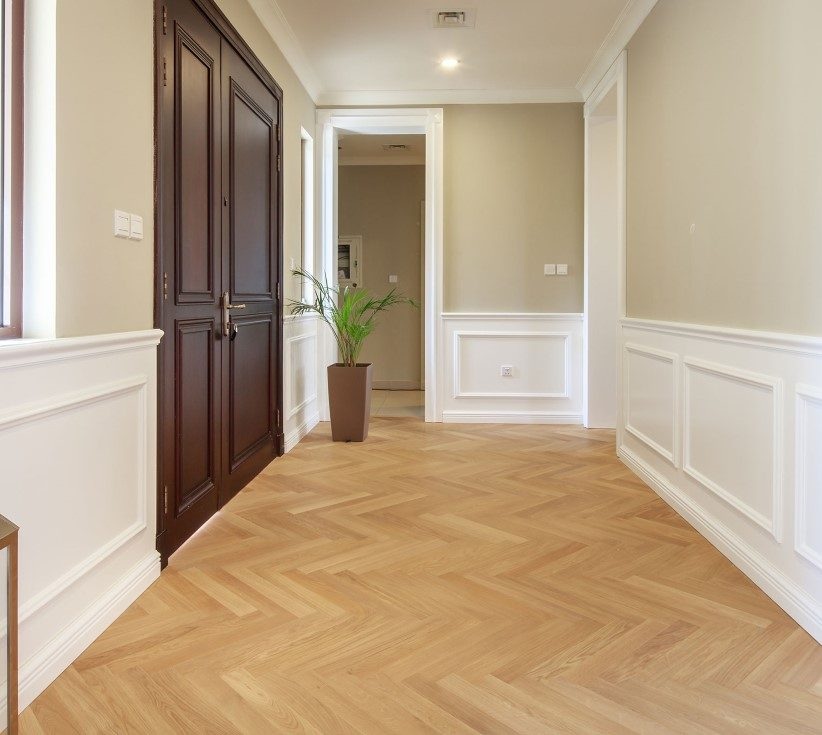
Spacious Rosa Villa in Arabian Ranches 2, Dubai, showcasing the elegant herringbone pattern flooring, by Nordic Homeworx
Herringbone pattern types transform spaces with their elegant, flexible designs, letting you create floors that match your style. Trusted experts like Nordic Homeworx, a leading flooring provider, offer high-quality herringbone solutions to bring your vision to life.
From the simple traditional herringbone to the bold chequerboard, each pattern suits different rooms and moods. Think about room size, lighting, and decor to pick the best herringbone pattern types for a unified look. With different flooring options, you can craft stunning, durable floors that last, making your space both beautiful and practical.
Frequently Asked Questions
What are the herringbone pattern types?
Herringbone pattern types are V-shaped flooring designs using rectangular or square blocks, offering elegance for homes and commercial spaces.
Which herringbone pattern types suit small rooms?
Traditional or straight lay herringbone pattern types suit small rooms, creating a clean, open look without overwhelming the space.
Can herringbone pattern types be used with LVT flooring?
Yes, LVT flooring supports herringbone pattern types, providing a cost-effective, durable option for stylish interiors.
How do herringbone pattern types affect room aesthetics?
Herringbone pattern types add visual interest, enhancing elegance and sophistication in any room with their dynamic V-shaped designs.
Are herringbone pattern types durable for high-traffic areas?
Herringbone pattern types, especially in hardwood or LVT flooring, are durable, ideal for busy homes or commercial spaces.
What colours work best with herringbone pattern types?
Light or contrasting colours complement herringbone pattern types, balancing their bold patterns for a harmonious interior look.
Can herringbone pattern types be installed on walls?
Skinny extra-long herringbone pattern types work well on walls, adding texture and style to commercial or residential spaces.
How do I maintain herringbone pattern types?
Regular cleaning and polishing preserve herringbone pattern types, ensuring their beauty lasts across various flooring options.
